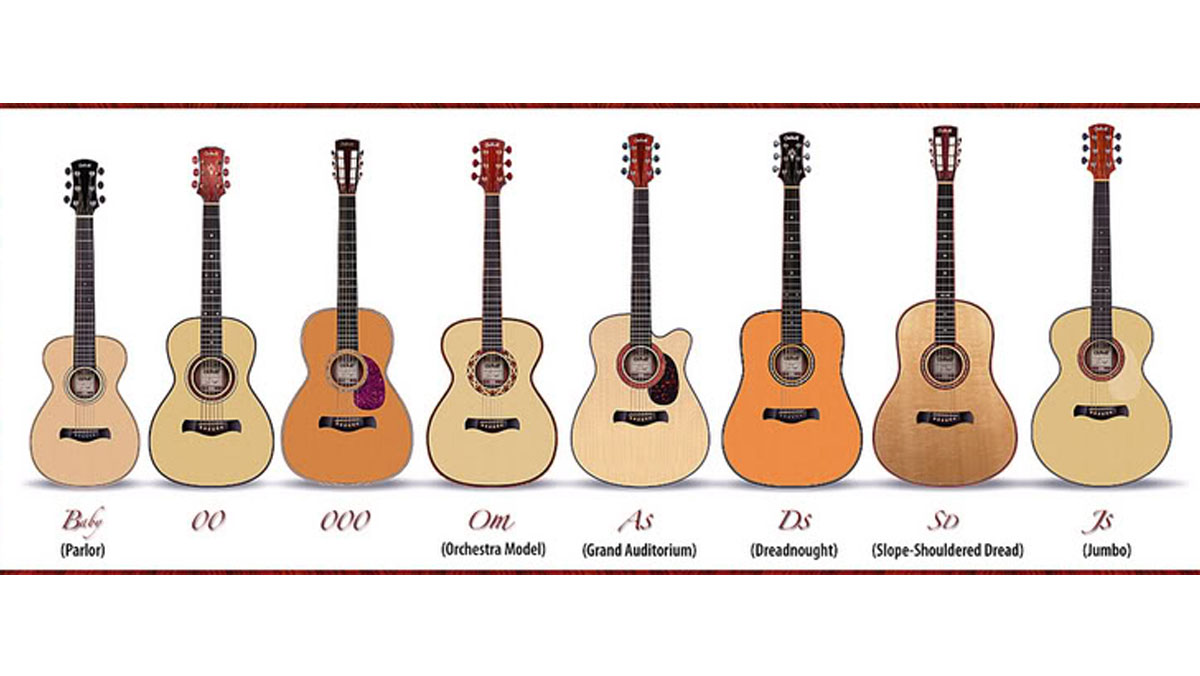Does size matter? Possibly, but it depends on what you are looking for. Are you looking for a big and bold sound? Or maybe your preference is a more clear and focused sound. Some just desire a guitar that is easy to pick up and play. While there are many important details to consider, the dimensions of the “box” itself and the attendant specs that accompany these varying dimensions constitute a reliable first step on your path to determining how to best meet your needs in your next guitar.
Body Width/Depth vs. Playability
A bigger box means a bigger sound but often it will also be a bigger demand on the player as far as getting comfortable around the physical size. Some folks find wide tops are an encumbrance; some can’t do deep bodies. With acoustic guitars, there is a trade-off to consider — bigger, bolder acoustic presence is often on the other end of the spectrum from what is most comfortable.
Smaller boxes, in particular shallower boxes, may produce more natural compression, heard by the player and listeners as a more concentrated and even tone (smoothing out the peaks), the trade-off is that you will lose a little bit of the dynamic range. But a smaller body will almost always be easier to play due simply to the size of the guitar.
Smaller Body (Parlor, 0, and 00)
These body styles are going to be the most comfortable when it comes to the smaller size and short scale length. While tonewoods will affect overall tonality, smaller bodies will generally have less presence and a narrower dynamic range. The sound will often have more mid-range but is always precise and articulate, hence the desirability of a small body guitar for recording purposes. To some extent, smaller body guitars can also have a more immediate response than bigger bodies.
Medium Body (000, OM, and Grand Concert)
The boxes on these guitars have a bigger sound and wider dynamic range than a small body. They will also have more balance, sensitivity, and comfort than the larger, big-bodied option. Medium boxes are versatile as far as genre and right-hand approach. Scale length tends to vary more in this “family” than others. Traditionally, 000 refers to a short-scale instrument and an OM refers to a long scale instrument, but it is quite different in the acoustic world today. There is also variation in body depth in this family. Deeper bodies equate bassier and present sound, while shallow boxes have more even responsiveness and compressed sound.
Large Body (Dreadnoughts, Grand auditorium, Jumbo)
Capable of the highest volume ceilings and the broadest dynamic ranges to be found in acoustic guitars. Mostly long scale instruments, but the short scale, slope shoulder dread is a distinct and marvelous exception to that rule. A big top with a long scale length tends to like high string tension and a heavy hand to “drive it” to its full capabilities.
Buying a guitar can be overwhelming at times, but starting your search from the perspective of how body size will impact sound and playability is a good idea considering the vast array of wonderful instruments out there. You should certainly expect to find a guitar that is “just right” for you.


